Whether you're aware of the correct terminology or not, you have likely experienced this colour contamination happening in your photographs already.
Put simply, colour contamination is when one colour is affected by the presence of another colour in close proximity. So for example if you're photographing two friends side by side, one of them is wearing a white t-shirt and the other one is wearing a red t-shirt, the white t-shirt will likely take on a pinkish tone due to the fact that it's receiving bounced light from the red t-shirt close by.
Take a look at how the white table tennis ball has been coloured pink due it's proximity to the red surface.
This colour contamination effect has nothing specific whatsoever to do with photography as it happens around us all day everyday and we are so accustomed to it that most of us never even notice it. So why bring it up? I bring it up here as it's a frustrating effect when it happens in our shots especially if we aren't aware of what's causing it. We may even just write it off as a white balance issue or other colour balance problem as it's usually so subtle we might not even try to correct it. But when colour contamination is at it's most intense, we have to take note and address it.
Think about doing a portrait shoot in the woods, you're surrounded by green, the leaves in the trees, some bushes and maybe there's even green grass on the floor around you. The daylight comes through the trees and bounces around on all the foliage before it hits your subject resulting in some very sick looking green subjects. Not a great look. Think about how many woodland portraits you've seen that have been converted to black and white?! Starts to make more sense now right?
Can't I just white balance my shots?
White balance exists on the Kelvin scale that specifically deals with balancing a certain range of colours, so no matter how hard you try, a lot of these colour contamination shots simply cant be fixed with white balance alone, hence the black and white solution. But more than that, colour contamination is often a localised effect. Let's go back to that white t-shirt that looks a little pink now because it was next to a red one. We can't colour balance the scene to correct the shirt without affecting the whole image. It's these factors that makes colour contamination such a troublesome problem and one that is incredibly overlooked.
What is this 'Radiosity' thing?
You can see on the left how 'fake' this computer generated room looks without radiosity compared to when it has it. On the right you can see the red floor is reacting with the with walls around it and the room feels a lot more real because of it. Image by Hugo Elias
Strangely radiosity is what I was taught 20 years ago in the film days but you hardly hear the word used in association with photography anymore. Now the word is more related to how light and colour act upon one another in computer generated worlds, in fact one of the greatest leaps forward 3D modelling has made was to accurately model how light affected one surface when in proximity to another. Without getting too nerdy, 3D modellers ironically love radiosity as it gives their worlds and textures an added depth and realism. We as photographers, specifically portrait photographers hate it and we try and colour balance it away where we can. If you're interested then you can take a look at radiosity in virtual worlds via this link but be warned, there's a whole lot of maths involved. Radiosity in Computer Graphics
Regardless of what you want to call it, this colour contamination effect is a very real problem for us photographers if we want to depict objects like people, cars, clothing and so on in the best possible way.
No company wants you to photograph their white car only for it to look a 'little pink' on one side and the same goes for fashion as well. We need to be aware of what colours we're putting next to one another.
Colour Contamination in Action
In the images below I set up a mini set to illustrate the colour contamination effect in action. I purchased three spheres, the cue ball with its very shiny surface, the table tennis ball with it's very matte surface and the golf ball for its very textured surface. I placed them all on a white surface and shone a single light at them with a variety of coloured papers next to them and took shots to document the whole thing.
Look closely at the shots below to see just how the different surfaces and textures are affected by the close proximity of colour.
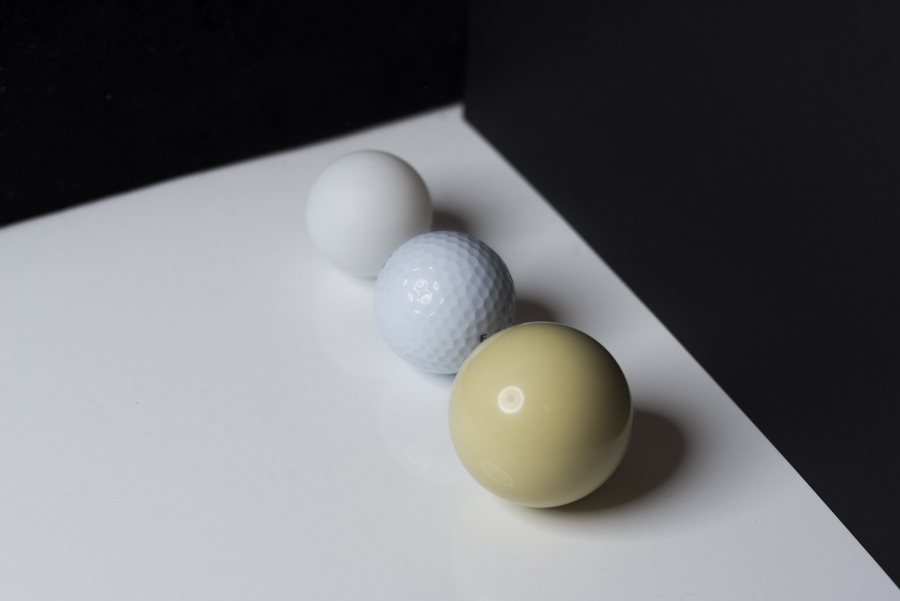
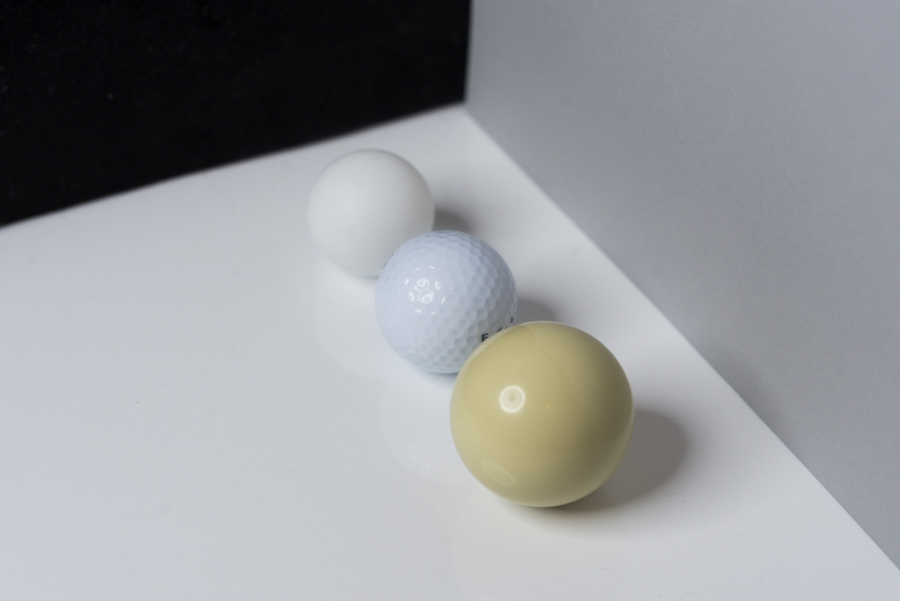
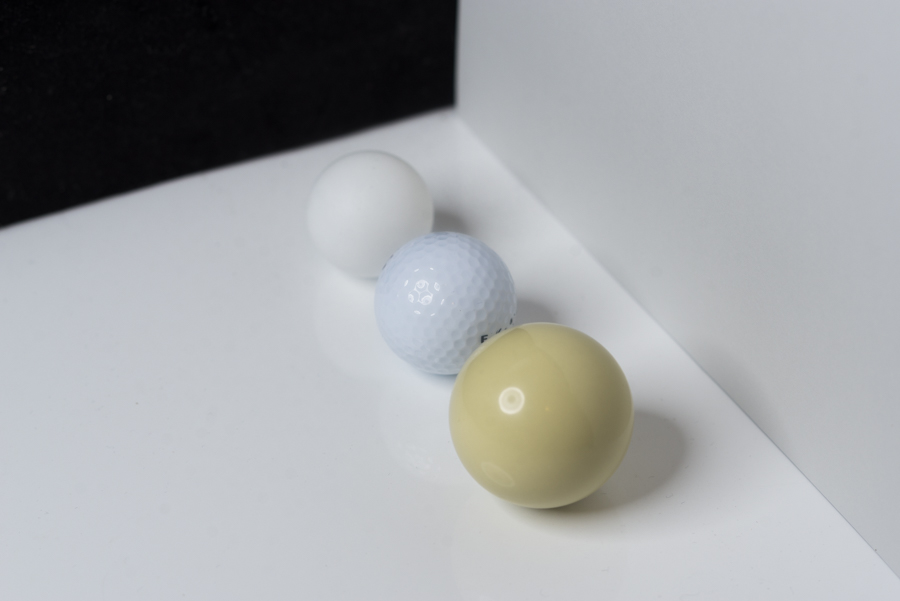

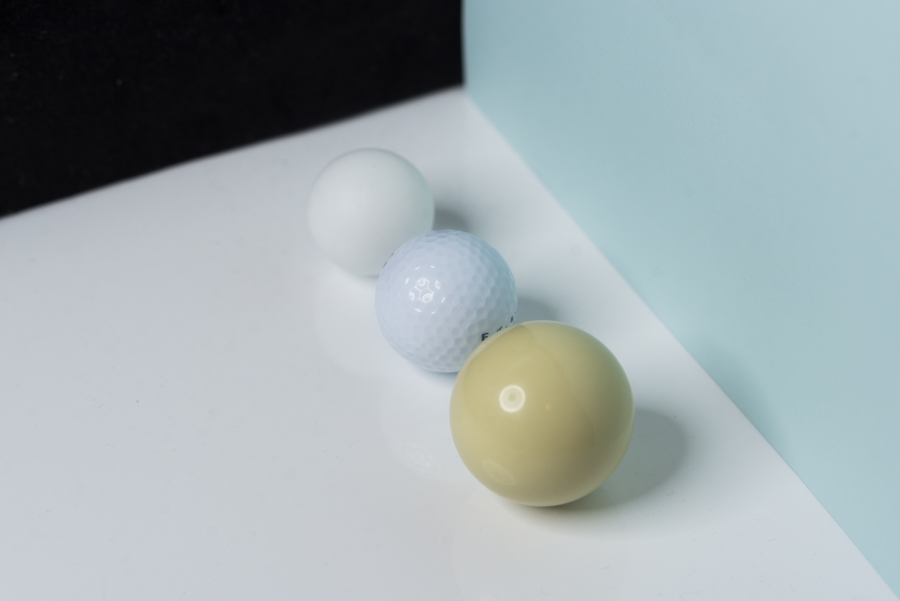
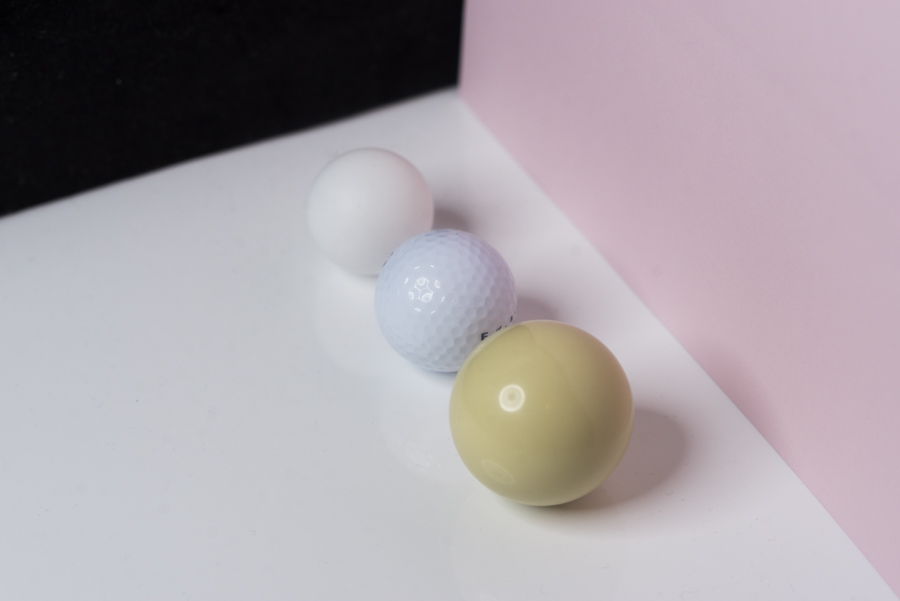
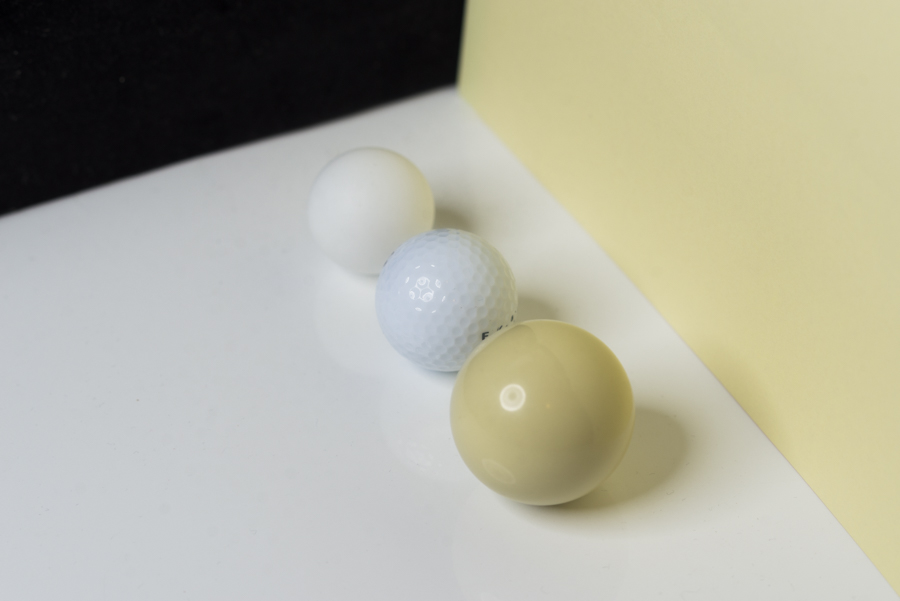
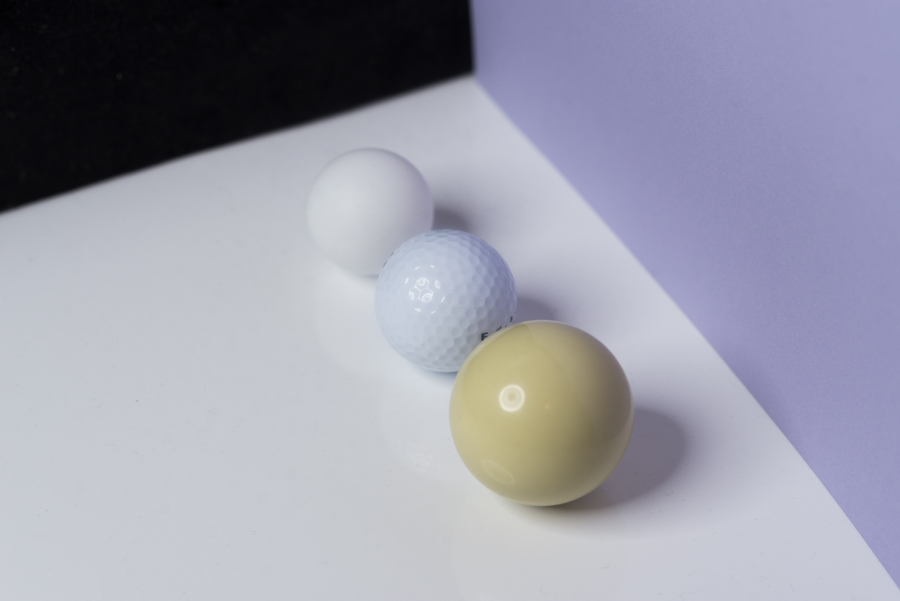
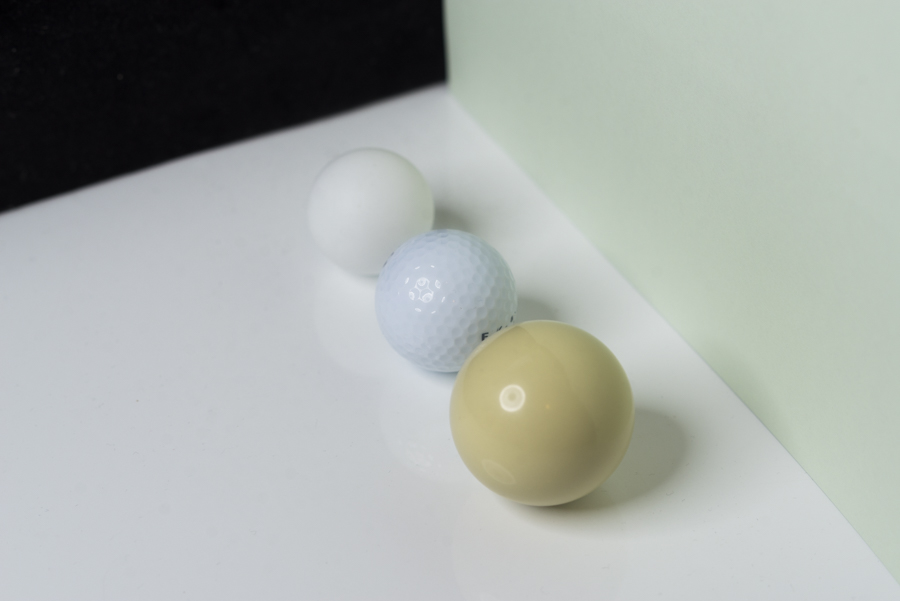
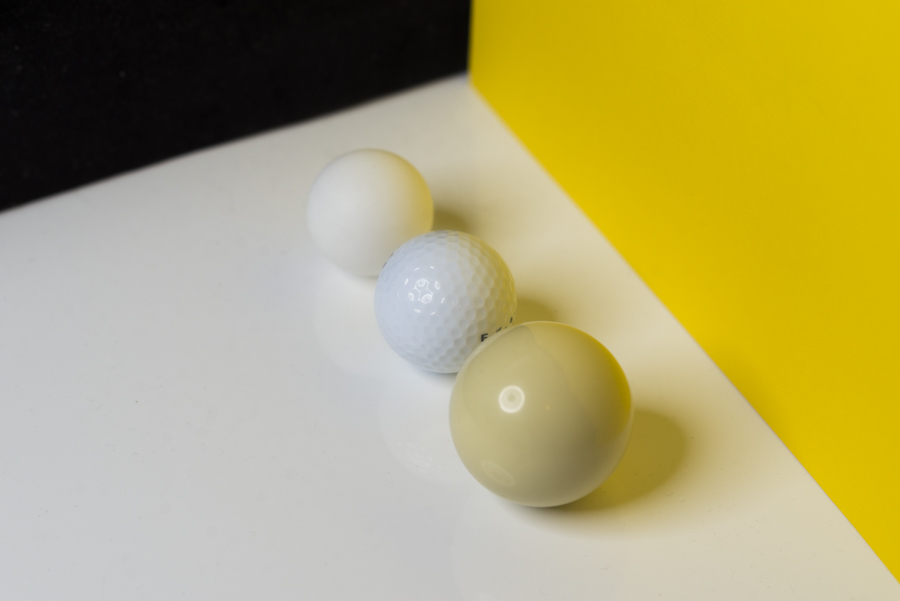
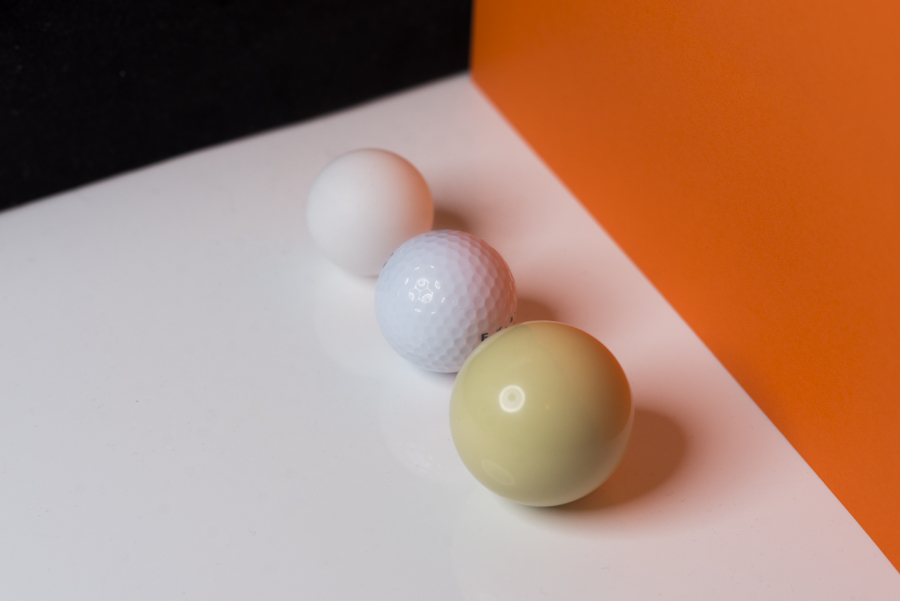
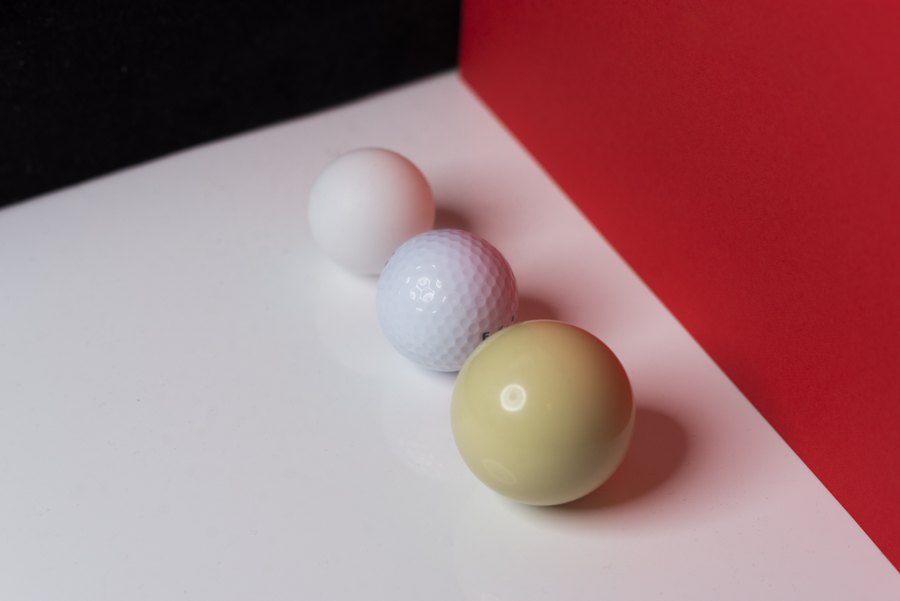

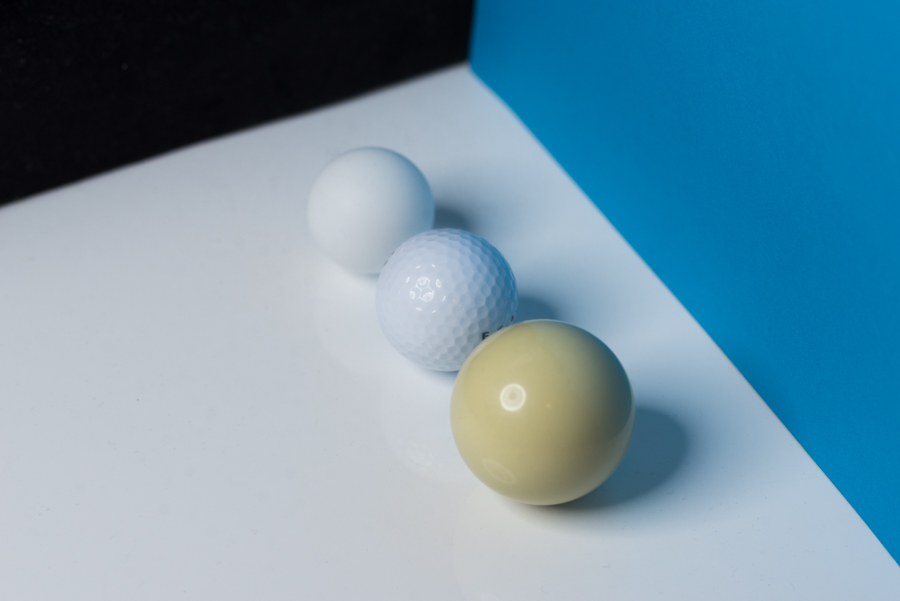
Taking a Closer Look
Upon first impressions you may not think it's a big deal because our eyes are so accustomed to normalising colour variance when it's in proximity to similar tones, but as the images change you should be able to see just how dramatic the effect is. To further cement my point, I've isolated the separate spheres in the images below and placed them next to the image of the spheres shot against the white. In isolation like this the effect is a lot more visible and significant to say the least.
Scroll through the shots below to see my point.














How can I use this knowledge?
You may look at the images above and think that it's just a byproduct of taking photos, there's no use worrying about something that can't be helped. Although there are times when this can't be avoided, colour contamination is very real and it is something we can limit a lot if we're careful. For example; think twice about photographing the bride right next to huge bunch of flowers, that green will bounce back onto the face. Consider bringing her slightly forward to avoid that or look at alternatives. Think about the effect of photographing a model next to a brightly coloured car or building. You don't need to avoid the shot but there are things you can do to limit the effect like always having the face pointed away from the brightly coloured object. As I documented in the images above, if you can't avoid the colour contamination, always try to have the offending colour in the actual shot. The effect is dramatically reduced visually if the eye can see where that colour is coming from compared to if you crop it out.
Can I use this knowledge to my advantage somehow?
I use black sheets and polyboards all the time in my shoots to not only control the light but add depth and shadow to subject. Although these aren't coloured the colour contamination principle is still at work.
The good news is that you can use this colour contamination effect to your advantage if you're clever. Remember that this radiosity isn't exclusive to colour, you can use blacks and greys to add dimension to your subjects and objects. You'll often see studio photographers using black polyboards (large polystyrene boards) either side of the model to control the light, this not only controls the light but also adds a lot of shape through shadow in the process. I will always carry black velvet sheets with me on location to limit the bounce of light around a subject but I also have sheets of grey card in the studio that are less severe than black to add a little definition to the features where necessary. In the sphere comparison photos above, look at the light grey and dark grey images compared to the black and white images. See how they shape the spheres differently though shadow? Use this to your advantage either in the studio or on location. Also consider taking a white sheet with you on location too. Along with my black velvet I always have a white sheet with me that I can throw up to either bounce in some light or limit the colour contamination of a nearby coloured surfaces.
Fire your assistant if they look trendy!
Many years ago I was photographing fashion in natural light at the beach. A pretty easy job but the issue was that when I got the images back and started working on them I saw a very ugly and insipid looking greenish tinge to some of the clothing and skin. It was only apparent in some of the shots and it was always localised to certain areas. It took me a very long time to work out what this was until I remembered that my assistant on the day had a bright yellow/green t-shirt on. In some of the shots he was in very close to the model holding a reflector just out of shot but not only was he bouncing in light from the reflector he was also bouncing in light from his hideously ugly t-shirt.
People joke about my grey sweatshirt but trust me, if you've every tried to colour balance out greenish tinges to skin you'll switch to looking boring as hell like me in a heartbeat. When I was assisting all those years ago back in London in the film days, black shirts were mandatory on set, no ifs or buts. Now the sets are a kaleidoscope of colour balancing nightmares. Take a look at the BTS of the film industry, how many lighting technicians are you seeing wearing day-glo?! Not many.
Of course I know I sound like a grumpy old man hahah ;) and although it's a very real problem it actually only affects certain situations like still life shooters with shiny surfaces or macro beauty work etc. Still life shooters who photograph metal or other shiny surfaces nearly always wear all black to avoid this. Either way, it's very wise to be aware of it and advise assistants on set to dress appropriately where necessary.
Closing Comments
I appreciate this weeks blog wasn't very salacious or exciting but I think this colour contamination effect is an incredibly overlooked aspect of modern photography due to the 'I'll fix it later in post' mindset. Not only is it very time consuming to fix it in post but it's also practically impossible in certain situations due to the colours being outside of the white balance spectrum. If you're aware of the colours around you when you're shooting then you can limit the effect or use it to your advantage where necessary.
Points to remember
- Think about the colour of surfaces around your subject.
- Should I use another area like a white wall nearby instead.
- Look at how multiple subject colours interact with one another when in close proximity.
- Bring a black and white sheet of fabric with you on location to throw over brightly coloured objects if you need to.
- Consider getting some dark and light grey card for the studio and use it as a bounce board instead of white. This will give more shape to you subject than just a white bounce board.
- Think about what the people on set are wearing. If assistants are going to be close to the final shot, get them to change any brightly coloured outfits.
- Think about what YOU are wearing. If you're a macro beauty shooter who will be inches away from your subject, you definitely don't want to be wearing bright colours as it will most certainly have an effect on the shot.
Thanks as always for reading, I know we live in a time of soundbites and Instagram so all the more respect to yourself for engaging for this long :) I hope this little bit of knowledge will help you at some point. If you have any questions then let me know and I'll do my best to answer them as quickly as I can.
Also, If you're new here then feel free to join our very active community of like minded lighting-nerds on my Facebook page, I'm always discussing lighting ideas and offering feedback on community images. If you'd like to stay up to date on more photography related tips and techniques then sign up to my mailing list where I'll send you a monthly roundup of all my articles (plus signing up gets you a free 10 page studio lighting pdf too :) ). Thanks again and I'll see you all in the next one.
P.S. I apologie for more than likely misusing 'affect' and 'effect' in multiple places. I tried to mix them up to give myself the best chance of getting some of them right ;) But I do apologise if this triggered you and let me know where I messed up and I'll make the changes :) Thank you in advance.
:WARNING: Sales Pitch Ahead :D
If you're interested in any of my work and would like to know more about how I created some of my shots then why not check out my workshops. Here you can find out everything there is to know about Gelled Lighting, Long Exposure Flash Photography and my entire Post-Pro Workflow. Jake Hicks Photography - Workshops
I've also just released a brand new 22 hour complete Gelled Lighting Tutorial video. I go over everything from studio lighting setups with gels to being on location with gels plus I also go through my complete retouching and post pro workflow. For more details and complete breakdown of everything that's include check out my Coloured Gel Portraits Tutorial
I also offer comprehensive coloured gel packs. These collections of gels are what I use day to day to create some of the most highly saturated colours around. If you're looking at getting into gelled lighting or need to get stronger and richer colours in your coloured gel work why not check out my Jake Hicks Photography Gel Packs








































